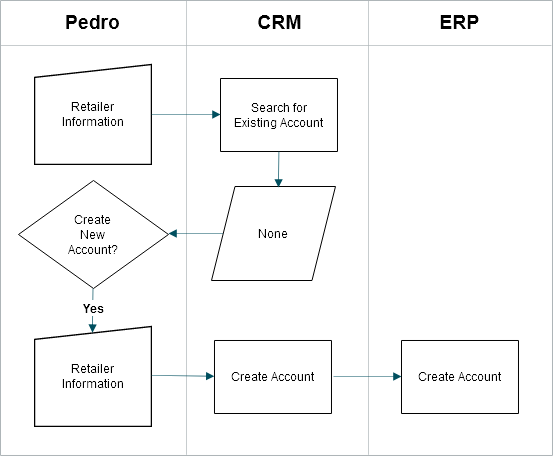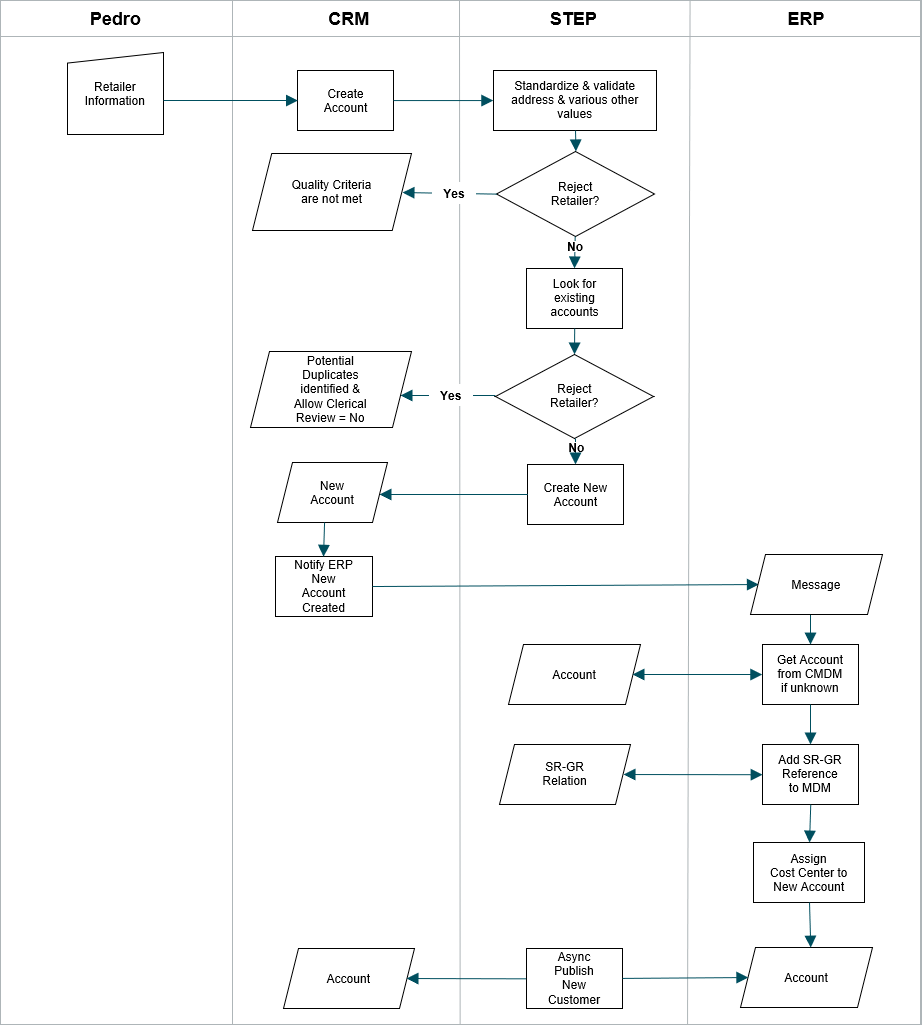Pedro from the marketing team is responsible for converting marketing leads into retailer accounts. They need to create and update retailers in the CRM and ERP based off results from a marketing campaign.
Pedro thinks the address information they gathered is sufficient for future business needs. They don’t realize how poor some of the address data is and is unaware that some of the retailers gathered during the marketing campaign are duplicates of existing retailers that have active orders. Pedro believes they are all new retailers to ACME and thinks the leads collected are useable. Pedro does not realize some of the retailers they collected during their campaign are no longer in operation under the name collected. The retailers have been acquired or have gone out of business. The CRM and ERP are disjointed systems at ACME, with Pedro only having access to the CRM. Changes to data are not always propagated efficiently between the two systems.
As a result, Pedro causes operational inefficiencies with substantial cost overhead in returned mail due to the poor address data. They create a poor customer experience when creating duplicate retailers in the landscape. Duplicate retailers may be contacted by multiple different salespeople, unaware of the existing relationship with the retailer. Additionally, updates to existing retailers may change the records in a negative way. Pedro produces operational inefficiencies when retailers that do not meet the quality criteria are created. This costs the sales team both time and money when they pursue non-useable retailers. ACME provides a poor customer experience as it struggles to keep retailers in sync, accurate, and up to date in both the CRM and ERP.
The following are examples of some solutions:
As-is
With the current System landscape, Pedro cannot reject the creation of records in the CRM when records that don’t meet the quality criteria are being created. They also cannot reject duplicates during creation. Additionally, when changes are made to records in the CRM, the ERP does not always reflect the most recent version.

To-be
With the request-response web service for coexistence style Customer MDM in place, Pedro can reject the creation or updating of records during the process. This allows the business to reject potential duplicates and records that do not meet quality criteria. The problem is addressed at the root, ensuring smoother operations throughout the entire landscape. Additionally, when the CRM notifies the ERP of changes to records, the ERP can pull the missing master data from STEP with the confidence that it is accurate and up to date.
